In recent years, drone technologies have been explored for a range of applications in conservation including (but not limited to) mapping, biodiversity inventories, antipoaching patrols, wildlife tracking, and fire monitoring. The rise of customizable, open-source drones like those of ArduPilot and OpenROV hold promise for more effective conservation applications, and combined with other monitoring sensors and devices, they are capable of collecting high-resolution data quickly, noninvasively, and at relatively low cost.
However, challenges remain in putting these tools to use. A recent paper reviewing 256 conservation drone projects highlighted some of these major obstacles, ranging from unintended social and ecological consequences of drone operations to still prohibitive costs, both in terms of hardware and in terms of storing and processing large volumes of data. The longstanding challenge of power/battery life remains as well.
If you're considering trying out drones for yourself, and want to explore the possibilities and understand the major conversations happening around this technology, check out these beginner's resources and conversations from across the WILDLABS platform:
Three Resources for Beginners:
- Conservation Technology User Guidelines Issue 5: Drones, World Wildlife Fund | Drones, best practices, ethics, regulations, case studies
- WILDLABS Virtual Meetup Recording: Drones, Craig Elder, Dr. Claire Burke, and Gabriel Levin | Drones, thermal camera, wildlife crime, ML, biologging
- New Paper: Drones and Bornean Orangutan Distribution, Sol Milne | Drones, data analysis, citizen science, community science, primates
Three Forum Threads for Beginners:
- Curious about radio-tracking with drones? | Wildlife Drones, Biologging (5 replies)
- Drones for GIS Best practice Document | Adrian Hughes, Drones (10 replies)
- WWF Conservation Technology Series: Drones in Conservation | Aurélie Shapiro, Drones (7 replies)
Three Tutorials for Beginners:
- How do I use a drone to capture radio-tracking data? | Debbie Saunders, Tech Tutors
- How do I choose the right drone for my conservation goals? | Shashank Srinivasan, Tech Tutors
- How do I strategically allocate drones for conservation? | Elizabeth Bondi, Tech Tutors
Want to know more about using drones, and learn from experts in the WILDLABS community? Make sure you join the conversation in our Drones group!
*Header photo: Parker Levinson, Point Blue Conservation Science
No showcases have been added to this group yet.
- @bellariskytaa
- | Her
Hi, I am Bella R. Arinda, a GIS Specialist passionate about conservation and community empowerment. Graduating with a degree in Geodetic Engineering gave me a strong foundation in GIS and remote sensing. I made the leap from engineering to conservation, dedicating myself to using
- 0 Resources
- 2 Discussions
- 7 Groups
- @aniyaz533
- | Niyaz
A keen willdlife biologist looking forward to work on Otters ecology in Himalayan landscape
- 0 Resources
- 0 Discussions
- 4 Groups
- @srfreeze
- | He/Him
I am a wildlife expert with a decade of experience working with bats and proven success in efforts to study, manage, and conserve the species. I work at the nexus of advanced technologies and deep ecological understandings to provide effective solutions to government, academic, a
- 0 Resources
- 0 Discussions
- 11 Groups
- @faishal
- | He
I have been an aerial dugong surveyor since 2014, with a background in Fisheries and Marine Science, specializing in Fisheries Resource Management, and experience in underwater ecological data collection and developing remote sensing technology for marine ecosystem monitoring.
- 0 Resources
- 0 Discussions
- 1 Groups
"As co-founder of IMPACT Madagascar and a geologist with extensive experience in GIS, I believe technology plays an important role in both environmental conservation and sustainable community development."
- 0 Resources
- 0 Discussions
- 3 Groups
A chemist by training and enthusiast about the environment by nature. Currently finishing my PhD where I was lucky to merge several of my passions such as programming, data analysis, aquatic ecology and analytical chemistry.
- 0 Resources
- 0 Discussions
- 7 Groups
- @Eldogk7
- | He/Him
Hardware engineer with 10+ years in IoT & drones, and 4 years in AI, dedicated to sustainability. Developed the world’s first AI soil nutrition sensor & a mine-detecting drone for the Indian Army. As Abhram’s Founder & CEO, I innovate with smart soil sensors & IoT weather station
- 0 Resources
- 1 Discussions
- 4 Groups
- @machadoams
- | He/Him
Universidade Federal de Santa Catarina (UFSC)
I am a behavioural ecologist interested in the role of individual variation in ecological interactions and in human-wildlife dimensions
- 0 Resources
- 0 Discussions
- 9 Groups
- @valengsb
- | she / her
GIS specialist for Audubon Americas | Biologist with an emphasis on Conservation and Sustainable Development | Innovative approaches in the study and monitoring of biodiversity for possible, biodiverse, and just futures.
- 0 Resources
- 0 Discussions
- 18 Groups
Michigan State University
Conservation Criminologist
- 0 Resources
- 2 Discussions
- 7 Groups
- @capreolus
- | he/him
Capreolus e.U.
wildlife biologist with capreolus.at

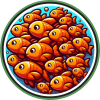



- 1 Resources
- 78 Discussions
- 16 Groups
- @JakobWiren
- | He,him
Swedish soon-to-be graduate engineer in AI/ML and robotics. Writing my master thesis in using decision trees for anti-poaching in Limpopo, South Africa. Am passionate about conservation, AI and travelling. Help me find a way to help you!
- 0 Resources
- 1 Discussions
- 13 Groups
This paper explores the use of UAVs equipped with thermal and standard cameras to accurately count the group sizes of the Critically Endangered cao vit gibbon, highlighting how this technology can overcome the...
13 June 2023
AirSeed has developed a unique approach to tackle climate change and restore biodiversity by combining drone technology, machine learning, and seed pod biotechnology to carry out planting that’s 25x faster than...
30 May 2023
Here's an innovative project from the Harvey Mudd College Bee Lab that could help us understand how bees view their environments, and thus better protect bee habitat. This project uses computer vision and drone imagery...
5 May 2023
Interesting project - “Our main goal for this is to develop a nature-friendly drone concept for wildlife monitoring,” Hassanalian said. “Traditional drones are often disruptive to ecosystems due to issues such as sound...
26 April 2023
New paper in Journal of Animal Ecology
24 March 2023
We used a combination of high-resolution satellite tracking (Fastloc-GPS), uncrewed aerial vehicle (UAV) surveys, and capture-mark-recapture approaches to assess the abundance of immature hawksbill (Eretmochelys...
21 March 2023
Discover how drones are revolutionising conservation efforts and learn five essential tips to fly responsibly and minimise harm to wildlife, humans, and the environment.
14 March 2023
The Innovation in Practice edition of Methods in Ecology and Evolution is still seeking proposals about conservation technology
6 March 2023
Interesting article that links to research on how technology has made studying moose populations easier, with particularly good explanation of what makes moose populations difficult to track.
22 February 2023
The Environmental Robotics Lab at ETH Zurich welcomes applications for a postdoctoral fellowship on robotics methods for the collection of environmental DNA to automate monitoring of biodiversity in terrestrial...
12 February 2023
Nice article about one of the Rainforest XPrize semifinalist teams - using drones to sample plant species. 'Nyberg and the National Tropical Botanical Garden (NTBG) team, working with the State of Hawaii's Division of...
10 February 2023
August 2025
event
September 2025
event
March 2026
August 2024
July 2024
event
33 Products
Recently updated products
| Description | Activity | Replies | Groups | Updated |
|---|---|---|---|---|
| Thanks for sharing, @Lot Adding a little more info in case anyone was interested but didn't click through - also, earlybird tickets are still available.... |
|
Drones | 8 years 4 months ago | |
| Hi @twhitten The British Model Flying Association provide a specialist insurance for drone operators who are not using them as a hobby nor for commercial purposes ("... |
|
Drones | 8 years 5 months ago | |
| This is a reminder about the ZSL Remote Sensing in Ecology and Conservation journal open call for papers on RPAS (aka UAVs)...... |
|
Drones | 8 years 6 months ago | |
| The first WILDLABS Meetup in Cambridge, UK for 2017 comes off the back of this discussion in the drones group. Anyone who has an... |
|
Drones | 8 years 6 months ago | |
| Hi all, I'm currently working on a project to improve forest quality assessments using drones. We would like to get hold of... |
|
Drones | 8 years 6 months ago | |
| Thanks for the link, @jprobert ! Parrot Education Blog's own link also here for reference http://edu.parrot.com/blog/2016/12/06/parrot-pix4d-team-forest-canopy-... |
|
Drones | 8 years 7 months ago | |
| The Parrot/Pix4D Climate innovation grant consists of an award of hardware and software for field research to foster innovation in... |
|
Drones | 8 years 8 months ago | |
| Hi Jprobert, I have been trying to use my Phanton 3 proffessional together with Pix4Dmapper to trial out some forest mapping in Principe Island. if you are interested check... |
|
Drones | 8 years 8 months ago | |
| Colleagues at WWF are working with US agencies in the Northern Great Plains to pilot drones for plague vaccine delivery in... |
|
Drones | 8 years 9 months ago | |
| Hi all, First of all, sorry for this delayed response! Thanks for the info, unfortunately i did not have enough time to inform my friend, but now we know for the next time! ;)... |
|
Drones | 8 years 9 months ago | |
| It takes a serious threat to convince the National Park Service to allow drones in its airspace, and for Puuhonua O Honaunau that was the... |
|
Drones | 8 years 10 months ago | |
| I will not consider karma for conservation, the 3DR Solo instead is much more smart and open source. Ready for more tasks than just a flying camera. Mavic of course is very... |
|
Drones | 8 years 10 months ago |
[ARCHIVED] Drones and the law webinar
5 October 2020 11:51am
Webinar: Drones for Change
 Wikifactory
Wikifactory
7 October 2020 12:00am
Webinar: Advances in Fisheries Electronic Monitoring
 SAFET
SAFET
21 September 2020 12:00am
Tech Tutors: How do I use a drone to capture radio-tracking data?
5 August 2020 8:22pm
6 August 2020 7:26pm
Hi Wildlabbers,
What a great episode and Q&A!! We had SO many questions for Debbie that we couldn't get to all of them during the stream. If you have follow-up questions about tracking wildlife with drones, be sure to ask them here and we'll pass them along to Debbie. You can also see all of the questions from the session here in our collaborative document, which also has resources and a log of the chat!
We'll be posting the full tutorial and Q&A video here tomorrow, so if you missed the episode, you'll be able to catch up soon.
Thanks to everyone who came to this episode, and we hope to see you again next week!
-Ellie
17 September 2020 12:27am
Hi all,
Firstly, I'd just like to say a big thank you to everyone who attended my Tech Tutors presentation last month. And secondly, thank you for your patience in allowing me to respond to your questions. If you have any further questions, please feel free to post them on the forum here or email me (debbie@wildlifedrones.net). I would love to hear from you!
Cheers,
Debbie
Tech Tutors Q&A:
Carlos: I have one single question today: is Debbie or someone using fully autonomous drones in their projects? No human control ever? Here, they are banned, even in non-populated areas.
Debbie: Our first research prototypes were autonomous (Cliff et al. 2015; 2018), however it had to be able to be controlled manually if needed to comply with flight regulations.
However, the autonomous nature of that prototype meant that it wasn’t able to be readily adapted for use on a diversity of drone platforms as more advanced systems became available, and also recognised that wildlife researcher’s primary need was for a tracking system in the air rather than a robotic tracking system. However, one day we hope to again be able to integrate our system into large-scale fully autonomous monitoring programs. With our current system, once you are provided with bearings to all tags within range you can begin to make decisions about where the next best place to go is to get the most effective intersecting bearing lines.
Cliff, O. Saunders, D. and Fitch, R. (2018) Robotic Ecology: Tracking Small Dynamic Animals with an Autonomous Aerial Vehicle. Science Robotics Vol. 3, Issue 23, eaat8409.
Cliff, O., Fitch, R., Sukkarieh, S., Saunders, D.L. and Heinsohn, R. (2015). Online localisation of radio-tagged wildlife with an autonomous aerial robot system. Proceedings of Robotics: Science and Systems 2015, Rome, Italy, July.
Sol Milne: Amazing work! Has this worked for small, below skin tracking tags?
Debbie: Our system can track any very-high frequency (VHF) radio-tag from any tag manufacturer globally. This includes VHF-tags that are designed to be inserted under the animal’s skin. We have tested Giant Armadillo implant tags previously and have even been able to detect them from when they were 3 metres underground in a burrow (although they are actually pretty big tags!). The effect of having an implanted tag is the same for both drone and manual tracking – with no whip antenna the detection distance is shorter but it can typically still be detected.
Julian Dale: Can you provide a cost for your system? We are developing a system for a longer endurance fixed wing aircraft VTOL (2-4hr endurance) to cover large areas and with full autonomy. I would be interested to chat more about a collaboration if you are interested?
Debbie: Absolutely interested Julian! We definitely have both a fixed wing VTOL and full autonomy on our roadmap – it’s just a matter of getting to it. Please do get in touch (info@wildlifedrones.net) to discuss further and we can also give you some specific pricing for your project needs.
Julian Dale: Would it be possible to combine two antenna and SDR's to cover a wider swath on a fixed wing?
Debbie: This certainly may be possible, but it would need to be thoroughly tested with both the pros & cons considered, such as extra complexity in the code, extra hardware housing and integration etc.
Paul: Q about RF (RT?)- have you looked into using Bluetooth Low Energy or LoRa instead of VHF? Bluetooth or Lora Gateway on the drone would look for signals, vast amount lighter - but not sure about range, hence my question, thank you all the same.
Debbie: When developing our system we decided that rather than trying to invent a new type of miniature tag which has it’s own inherent challenges, we wanted to develop a better way to detect and track VHF tags that are already used all around the world. Having said this, we have explored various alternatives in terms of communications and data transfer such as LoRa but found our setup to perform more reliably and to have much greater communication ranges (tested for real time data feeds out to 2.5km currently).
Arky: Wonder if this system could be adapted for fixed wing drones / Vertical take-off and land (VTOL) systems that could be useful in some use-cases.
Debbie: Yes, it can be. We are currently in the process of exploring the best way for our system to be adapted onto a fixed-wing drone platform and it is a key part of our development roadmap. We can see many advantages and applications for using fixed-wing drones – especially as they are typically able to search much larger areas!
Rob: Hi Debbie, this system is amazing! I am so with Steph (what I could've done with this 10 or 15 years ago)! I was wondering, can your system work with SensorGnome-style coded VHF tags?
Debbie: The key issue with tracking coded tags using our system is that they are all on the same frequency. Our system works by finding the maximum signal for each unique frequency so having lots of tags in all different directions but with the same frequency wouldn’t work. Having said this, I have wondered whether we would be able to ramp up the interrogation of coded tag signals, detect them all and decode them on the fly so that they can be located. But I’m sure my tech team would roll their eyes at me over that one since I am sure it would quite challenging to do. But if you have any good ideas on how this may be achieved we’d be happy to give it a shot!
Sophie: Provided an Argos goniometer on board the drone, you could detect the animal equipped with an Argos tag as well?
Debbie: I’m not sure exactly what signals the goniometer is detecting, however if the Argos tag (or any other tag) includes a standard VHF radio signal as a back up option in case the tag fails then we can track it with our system regardless of who the tag manufacturer is. This may not work if they don’t use VHF radio-signals.
Sophie: Do you have a system to recover the drone in case of loss?
Debbie: If you wanted to put a radio-tag on your drone as well as on your animals, then our system could certainly track them both as long as they are within the detection range of the tag. The detection range varies depending on size, with small tags having shorter detection distances.
Pascal: Have you tried/considered using an automatic direction finder system (which can 'virtually rotate' its beam direction using a phased array of multiple antennas)? And/or continuously recording the received radio signal for (additional) later offline analysis?
Debbie: Yes indeed, we have considered and explored both of these options. The use of a phase array creates many interesting hardware and software challenges when considering a lightweight, robust system that can be used on a drone, and although there could certainly be benefits in such a system we found that the costs generally outweighed the benefits. In terms of collecting data and processing it later, this is currently possible as well as real time data collection. However one of the key advantages of our current system is that you are not “flying blind” since you can see exactly what signals you are/aren’t picking up and their directions which means that your data collection is much more targeted and effective.
Melissa: How does the drone work in high wind? What is the max wind speed you can fly it in? Also, what was the updated the flight time after your initial troubleshooting (if it got better than 10 minutes)?
Debbie: The system can work in high wind but the error margins around estimated locations will be larger due to the buffeting effect of the wind on the magnetometer which provides the bearings. If all you want to see is that you can detect your animals wind wouldn’t matter too much, but if you are aiming to get accurate locations you will find they will have larger errors than if you flew in calmer conditions. If it is really windy and the drone is working really hard to maintain it’s location you will also notice that it can tilt quite a lot and so in this case the antenna may be pointing at the sky instead of across the landscape and so would be less likely to detect tags. It’s always a good idea to fly within the recommended wind speed rating of your drone (from memory the DJI Matrice 210 recommended max wind speed is 10 m/s.
Julian: Can you tune your system to cope with radio interference from different aircraft? [ STEPH: is this duke julian? If so - we might hold this question]
Debbie: Not exactly sure what interference from different aircraft you are referring to sorry, but dealing with radio-interference is certainly one of the greatest challenges when listening for low powered tags in our noisy radio world! However, we do have a nice combination of hardware and software that enable us to eliminate or manage a range of different potential interferers both within and outside of the target frequency bands.
Liam: You mentioned earlier that you were interested in the migration routes of the parrots - have you tested the use of your system for migration pathways in any other species? And how do you work with the battery limitations?
Debbie: We haven’t had the opportunity to use our system to understand the full migratory pathways of swift parrots yet since we are currently unable to use long-term attachments on this species so we have had to focus on tracking them within their winter range instead – but we’re super keen to get there one day! We haven’t tested it along migration pathways as such, but rather we have tracked other migratory species within their winter foraging range. Would be great fun to try tracking along an entire migratory path though!
Miguel: Drones are usually very noisy. Don't animals run away when they hear the drone? Or does it fly high enough that it doesn't disturb the animals? How high can it fly while being able to get the data?
Debbie: Radio-tracking from a drone is less disruptive to most species compared to manually radio-tracking on foot, or using other drone sensors like visual or thermal cameras. This is because our system doesn’t require you to fly directly above or in close proximity of the animals you are tracking in order to get their location. Our system detects signals from distance, determines bearings and then triangulates the animal’s location. Filghts are generally limited to below 120m however we typically fly at around 40m or so depending on the height of the vegetation (at least this is the specific regulation height in Australia).
Isla Duporge: Thanks Ellie, I was just wondering how many have been made, cost of hiring and whether there is the intention to be able to sell them to researchers.
Debbie: So far we have made 30 of these systems and we are happy to provide you with specific costing details for your project if you would like to get in touch (info@wildlifedrones.net ). They are only available for hire, not to buy, but unlike most equipment hire arrangements, we provide full technical support for you and your team should you need any help or guidance. Also, given the tech is advancing all the time, if you have a long term project we will upgrade your system each year with the latest model!
Phoebe Griffith: Similar question to above, I was wondering if they might be possible to purchase (rather than hire) for long term tracking projects (we track animals for 2+ years), and if so what the approx costs are?
Debbie:
Same response as above:
We are happy to provide you with specific costing details for your project if you would like to get in touch (info@wildlifedrones.net ). They are only available for hire, not to buy, but unlike most equipment hire arrangements, we provide full technical support for you and your team should you need any help or guidance. Also, given the tech is advancing all the time, if you have a long term project we will upgrade your system each year with the latest model!
Rob: Have you had a chance to look at using tags/untagged animals for abundance (e.g. koalas) or survival studies, as your drones can cover so much area
Debbie: Yes, so we are currently in the process of using both thermal and radio-tracking drone technology to find both tagged and untagged animals at the same site. We recognise that not all animals can be tagged and have found that thermal technology can help fill that gap. The great thing about drones is that they are capable of carrying multiple sensors, allowing you to collect a diverse range of data.
Sean: Are you using an "off the shelf" flight platform or is it bespoke?
Debbie: Our system is able to be mounted onto off-the-shelf drone platforms that can carry a 1kg payload, such as the DJI Matrice 210 and similar models.
Carly: Also, this might be a stupid question, but can these things go up at night? E.g. tracking nocturnal animals.
Debbie: No such thing as a stupid question! They are all good! Drones can certainly be flown at night to track nocturnal animals. However, it should be noted that in most places, you’ll need to be a licensed drone pilot and have special authorisation to fly at night. We recommend that you check your local area’s drone rules and regulations for more information on this before you fly.
Tech Tutors: Review Session
3 September 2020 12:00am
Sustainable Fishing Challenges: Fishing Gear Innovations
19 August 2020 12:00am
Tracking Wild Reptiles, Amphibians, And Their Temperatures
31 July 2020 12:00am
15 September 2023 11:02pm
16 October 2023 4:07pm
How do I use a drone to capture radio-tracking data?
27 July 2020 12:00am
Rural Research residency in drone sowing and wild seeds in Spain
23 July 2020 1:21pm
Kākāpō Dreaming: A Wildlife Drones Adventure
8 July 2020 12:00am
Seeking feedback: draft principles for responsible use of conservation surveillance technology
9 June 2020 6:28pm
WILDLABS Tech Tutors: Season One
19 May 2020 12:00am
Using UAVs to Assess carbon in Mangroves
13 May 2020 1:06pm
Training Course: Quantitative Analysis of Marine & Coastal Drone Data
 Duke Marine Lab
Duke Marine Lab
29 April 2020 12:00am
Connecting to MBARI's Deep-Sea Instruments
31 March 2020 12:00am
WILDLABS Community Call Recording: Rainforest X-PRIZE
30 March 2020 12:00am
Virtual Field Trip: Conservation Technology with Shah Selbe
24 March 2020 12:00am
Able to Provide Movement Detection Software For Live Feed Video
16 January 2020 5:15am
11 March 2020 3:22am
Hi Ruth,
Thanks for your reply and the suggestion.
I contacted air shepherd and a few similar groups a few moths ago and they were all saying they are not interested due to the difficult drone regulations. Hopefully the regulations are not as arduous in Zimbabwe?
Please don't hesitate to ask if there is any technical information or assistance that I can provide to help with your project,
Jessi Hargrave
15 March 2020 5:15pm
Hi Jessi,
I can check on the regulations for the specific area that is planned for a wildlife sanctuary in Zimbabwe. What altitude does the drone need to operate in? Does it require communications with any ground-based facility?
Ruth
15 March 2020 11:40pm
Hi Ruth,
Thanks for your email.
Essentially the software is only an advantage if the drones are being flown at altitudes that provide a wide area and less visible detail (i.e. if the operator flies at 3000ft (instead of 1000ft) it will cover 9x the area and see very small detail (which the software can pick up but the human eye may miss). In addition the software needs video feed from a computer (it sort of overlays the video) so it is only useful for drones that are able to relay decent quality video feed to a ground control station where an operator is viewing it live.
I have been advised that the drones that this is most useful for are likely to be at least 5kg (ie not the small toy ones that give video to a tablet).
I hope that helps? Please feel free to ask anything else and I will see what I can find out,
Jessi
#Tech4Wildlife 2020 Photo Challenge In Review
4 March 2020 12:00am
Call for Nominations: Tusk Conservation Awards
3 March 2020 12:00am
Hawai'i Conservation Conference
 Hawaiʻi Conservation Alliance
Hawaiʻi Conservation Alliance
28 February 2020 12:00am
New Conservation Dataset with Thermal Infrared Images from Drones
26 February 2020 6:48pm
Drone Reforestation Tech for everyone
24 February 2020 12:04pm
Hacking Climate Change - Coaction on Climate Crisis
 COACT
COACT
20 February 2020 12:00am
Habitat Restoration in the Pennines, UK
30 January 2020 8:48am
LIDAR USA sensor
14 January 2020 12:38pm
Thermal imaging, drones, and loggerhead sea turtles: a #tech4wildlife case study using FLIR's new Duo Pro R camera
21 September 2018 3:21pm
24 December 2019 6:42am
Rob thanks for the offer, sorry about delay in reply work has been in way. I have spoken to our coordinator here and we would be interested in borrowing flair 640 to see if it helps locate. Let me know he best way to get in touch.
2 January 2020 5:10pm
Hi thermal people,
Just a quick heads up, but I am exploring some of Seek Thermal's (ex FLIR engineers I believe) new Mosaic Core modules by having a play with their developer's kit. I'll report back once I receive the equipment, but their intention is to release 320 x 240 cameras at very low cost. Note - they won't sell them individually, so a reseller will be necessary, but if they are cost effective at this resolution it could prove excellent for wildlife conservation use.
https://www.thermal.com/uploads/1/0/1/3/101388544/mosaic_core_specification_sheet.pdf
Cheers,
Alasdair
2 January 2020 6:12pm
Cheers Al, and looking forward to hearing more about them. I am, as we speak, editing some thermal videos of wallaby behaviour near roads, specifically in relation to devices that activate lights and sounds when a car is approaching (activated by vehicle headlights at night). Used a Flir 640R, but I reckon half that resolution would still be fine. Unfortunately, not much support for the devices themselves working as a deterrent/warning (although I have some ideas on how they could with additional stimuli), but the thermal camera works great for non-invasive observations!
Image Processing Advice
22 October 2018 11:53am
13 November 2018 12:09pm
I just thought I would mention that i've been talking to Sol about his issue and also around multispectral and thermal sensors. No solution as yet to the issue but Sol will share some of his data with us so we can take a look.
28 November 2019 1:45am
Just wanted to mention I found a solution to my georeferencing issue. You can use the 'geosphere' package in R to identify the coordinates of specific coordinates in each image, based on the position of the central coordinate, bearing and distance to target pixel.
Feel free to drop me a line if you want a hand doing this!
28 November 2019 8:53am
Really useful to know about that package, thanks
[ARCHIVE] Virtual Meetup Discussion: Drones
19 November 2019 3:04pm
[ARCHIVE] WILDLABS Virtual Meetup Invitation: Drones
18 November 2019 4:35pm





















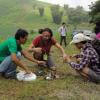





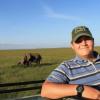













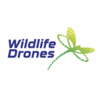
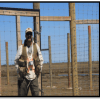




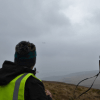



8 October 2020 6:30pm
Very cool, thanks for sharing, Adrian! We'll put this up on Twitter as well.